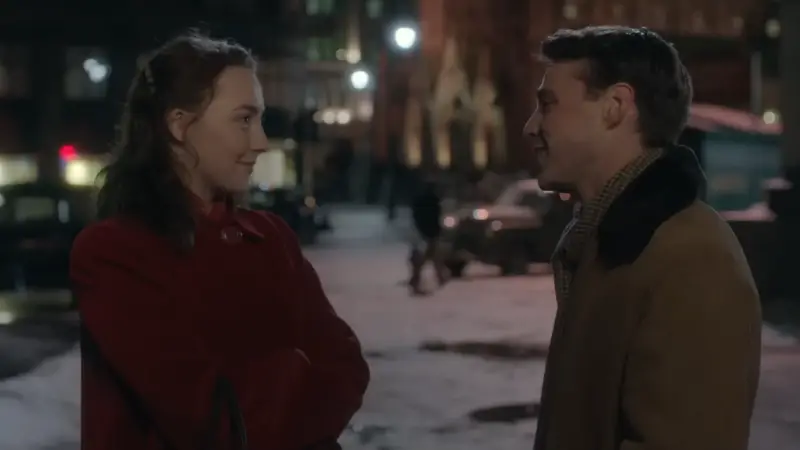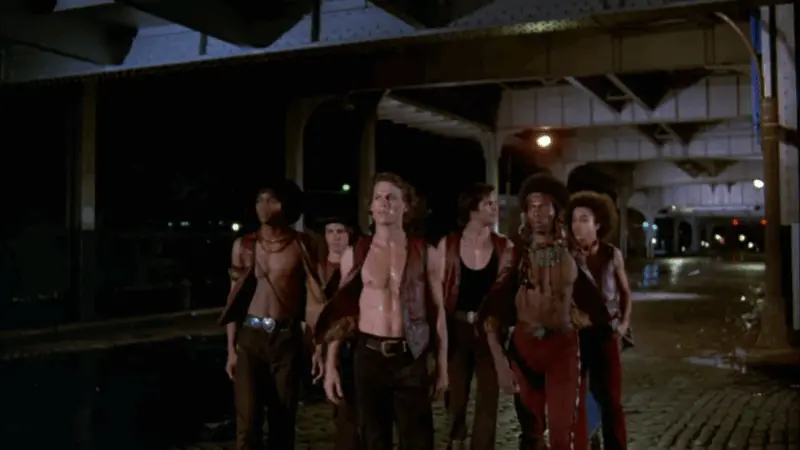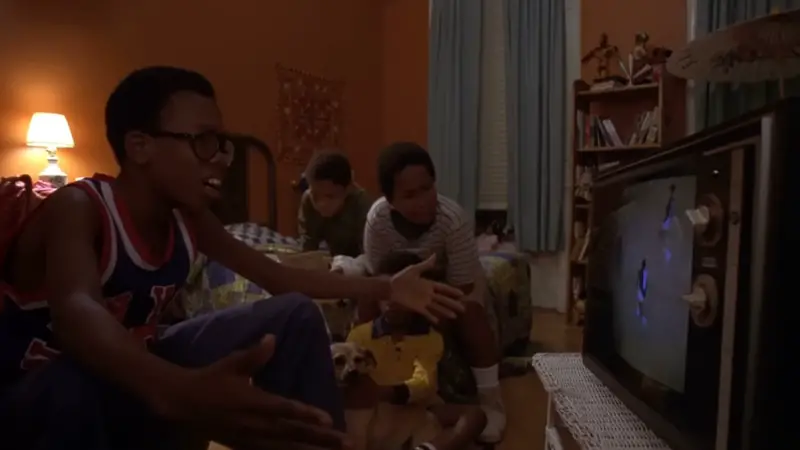Brooklyn is more than a borough; it’s a living, breathing character in the stories it hosts.
From brownstone-lined streets echoing with children’s laughter to late-night bodegas buzzing with life, Brooklyn has always been a magnet for filmmakers seeking to capture authentic slices of New York life.
Its layered identity—a blend of grit, warmth, ambition, and resilience—translates beautifully to the screen, creating films that resonate with viewers far beyond city limits.
What makes movies set in Brooklyn unforgettable is their ability to transport you into specific neighborhoods and eras while telling deeply human stories about family, survival, dreams, and community.
These films are not just about landmarks or scenery; they encapsulate cultural shifts, personal struggles, and the spirit of people who define Brooklyn’s past and present.
1. Do the Right Thing (1989)
| Detail | Information |
| Director | Spike Lee |
| Genre | Drama |
| Setting | Bedford-Stuyvesant, Brooklyn |
| Themes | Race relations, community tension, heatwave, activism |
| Why It Stands Out | Captures the vibrant yet tense atmosphere of Brooklyn with an unflinching look at racism and community |
Spike Lee’s Do the Right Thing is not just a film; it is an urgent, unforgettable experience that immerses you in a day in Bedford-Stuyvesant during a blistering heatwave. The movie’s energy pulsates through every frame as neighbors gather on stoops, argue, laugh, and watch the neighborhood’s tensions boil under the relentless sun.
Lee captures the nuances of community life in Brooklyn—local businesses, neighborhood characters, and the sense of familiarity that can shift instantly under societal pressures.
The film does not shy away from hard truths about racism and police brutality, making it timeless in its relevance.
It is as much about Brooklyn as it is about America, using the borough’s microcosm to explore larger systemic issues. With its colorful visuals, unforgettable characters, and an ending that forces viewers to confront uncomfortable realities, Do the Right Thing stands as a cornerstone of Brooklyn cinema.
2. Brooklyn (2015)

| Detail | Information |
| Director | John Crowley |
| Genre | Drama, Romance |
| Setting | 1950s Brooklyn |
| Themes | Immigration, identity, love, cultural transition |
| Why It Stands Out | A tender portrayal of the immigrant experience and the emotional pull of two worlds |
Brooklyn offers a gentle yet profound look at the borough through the eyes of Eilis Lacey, a young Irish immigrant who steps into 1950s Brooklyn seeking a new life.
The film beautifully captures the emotional complexity of leaving behind familiarity for uncertain opportunities, a theme that resonates with many who have come to Brooklyn in search of better futures.
Through Eilis’s journey, viewers experience dance halls, Sunday church services, and the bustling streets that symbolize the borough’s vibrancy and promise.
The film does not gloss over the loneliness of immigration, instead weaving it into the warmth and romance of new connections.
It shows Brooklyn as a place where identities are reshaped and dreams find room to grow, making it essential viewing for those who wish to understand the borough’s role as a gateway for generations of newcomers.
3. Saturday Night Fever (1977)
View this post on Instagram
| Detail | Information |
| Director | John Badham |
| Genre | Drama, Music |
| Setting | Bay Ridge, Brooklyn |
| Themes | Youth culture, working-class dreams, disco era |
| Why It Stands Out | Iconic portrayal of disco culture and the search for identity within Brooklyn’sworking-classs |
When John Travolta’s Tony Manero struts down the streets of Bay Ridge with the Bee Gees playing, Saturday Night Fever delivers one of cinema’s most iconic openings.
If you want to reach Bay Ridge from Sheepshead Bay, check out the B4 Bus Schedule.
Yet, beneath the disco lights and pulsating soundtrack lies a poignant story about a young man’s desire to break free from the limitations of his working-class life in Brooklyn.
The film uses Brooklyn’s streets, dance clubs, and family tensions to explore themes of identity, aspiration, and the search for purpose. It captures the clash between the allure of the dance floor and the reality of dead-end jobs, family expectations, and personal insecurities.
For many, Saturday Night Fever represents a moment in time when Brooklyn’s disco culture provided an escape for youth looking for more than what their circumstances offered.
4. The Warriors (1979)

| Detail | Information |
| Director | Walter Hill |
| Genre | Action, Thriller |
| Setting | Coney Island, Brooklyn |
| Themes | Gang culture, survival, urban journey |
| Why It Stands Out | A cult classic capturing Brooklyn’s gritty energy with a stylized, mythic urban journey |
In The Warriors, a gang’s desperate journey back to their home turf in Coney Island after being framed for murder becomes a mythical odyssey through the dark underbelly of New York City.
The film’s raw portrayal of late-1970s Brooklyn, with graffiti-covered trains and tense street encounters, showcases a borough before its gentrification, brimming with a chaotic energy that defined an era.
Despite its stylization, the film reflects real concerns about survival and identity, using Brooklyn as the setting for a story of brotherhood, loyalty, and the challenges of navigating a harsh world.
The Warriors remains a cult favorite for its memorable dialogue, striking visuals, and unfiltered depiction of Brooklyn’s streets.
5. Moonstruck (1987)
@classictimes Cher and Nicolas Cage in “Moonstruck.”(1987).#Cher #NicolasCage #Moonstruck #1987 #80s #Retro #Vintage #Slap #Fashion #OldHollywood ♬ original sound – Classic Times
| Detail | Information |
| Director | Norman Jewison |
| Genre | Romantic Comedy |
| Setting | Brooklyn Heights, Brooklyn |
| Themes | Family, love, Italian-American culture |
| Why It Stands Out | A heartwarming and humorous look at love and family within a Brooklyn community |
Cher and Nicolas Cage light up the screen in Moonstruck, a romantic comedy that celebrates love in all its messy, passionate forms against the backdrop of Brooklyn Heights.
Outdoor comedy events across New York add another layer of humor and spontaneity, echoing the film’s spirit of finding joy in unexpected places.
The film explores the dynamics of an Italian-American family, with dinner table conversations that range from hilarious to deeply touching, capturing the rhythms of family life in Brooklyn.
The neighborhood’s brownstones and local businesses serve as more than scenery—they are woven into the characters’ lives, shaping their interactions and dreams.
Moonstruck is as much about Brooklyn as it is about romance, highlighting how love and family intertwine within a community that feels alive and real.
6. A Tree Grows in Brooklyn (1945)
Peggy Ann Garner in A Tree Grows in Brooklyn (1945) https://t.co/vVDCJB0pVj pic.twitter.com/jwVFyCbVA1
— Cristiane Young (@CYoung25fd8h) February 15, 2024
| Detail | Information |
| Director | Elia Kazan |
| Genre | Drama |
| Setting | Williamsburg, Brooklyn |
| Themes | Poverty, resilience, coming-of-age |
| Why It Stands Out | A timeless tale of family perseverance in early 20th-century Brooklyn |
Elia Kazan’s A Tree Grows in Brooklyn is a poignant coming-of-age film set in early 1900s Williamsburg, chronicling the Nolan family’s struggles with poverty and their hopes for a better future.
The film, based on Betty Smith’s beloved novel, captures the spirit of resilience in a Brooklyn neighborhood where hardship is part of daily life, but so is hope.
The tree growing outside the family’s tenement becomes a symbol of perseverance, mirroring the family’s quiet determination to rise above their circumstances.
This film offers a window into Brooklyn’s past, reflecting the immigrant experience and the enduring belief in the American dream.
7. Crooklyn (1994)

| Detail | Information |
| Director | Spike Lee |
| Genre | Comedy, Drama |
| Setting | Bedford-Stuyvesant, Brooklyn |
| Themes | Family, childhood, community |
| Why It Stands Out | A warm, nostalgic look at childhood in 1970s Brooklyn |
Spike Lee’s Crooklyn takes viewers on a nostalgic journey through 1970s Brooklyn, focusing on a young girl’s experiences in a tight-knit family and vibrant community.
The film is filled with colorful scenes of kids playing in the streets, neighborhood block parties, and the day-to-day dynamics of a family finding joy and struggle in equal measure.
What makes Crooklyn special is its authenticity. It feels like a home movie that captures the laughter, arguments, and small moments that define childhood and community life in Brooklyn.
Through its soulful soundtrack and heartfelt storytelling, the film immerses you in a Brooklyn that feels alive and intimately familiar.
8. Goodfellas (1990)
| Detail | Information |
| Director | Martin Scorsese |
| Genre | Crime, Biography |
| Setting | Various, including Brooklyn |
| Themes | Crime, loyalty, rise and fall |
| Why It Stands Out | A raw, compelling look at organized crime with scenes rooted in Brooklyn life |
Martin Scorsese’s Goodfellas is a masterclass in storytelling, capturing the rise and fall of Henry Hill within the New York Mafia. While the film spans multiple locations, key scenes rooted in Brooklyn showcase the borough’s integral role in the world of organized crime during the mid-20th century.
Scorsese’s meticulous attention to detail, combined with Brooklyn’s diners, streets, and neighborhoods, adds authenticity to the narrative of ambition, betrayal, and the cost of a life of crime.
The film is both a cautionary tale and a fascinating glimpse into a world that once thrived in the shadows of Brooklyn’s neighborhoods.
9. He Got Game (1998)

| Detail | Information |
| Director | Spike Lee |
| Genre | Sports Drama |
| Setting | Coney Island, Brooklyn |
| Themes | Family, ambition, pressure of sports |
| Why It Stands Out | Explores the intersection of basketball, family, and community pressures in Brooklyn |
He Got Game is Spike Lee’s raw, emotional exploration of basketball culture in Brooklyn, starring Denzel Washington and NBA star Ray Allen. Set in Coney Island, the film centers on Jesus Shuttlesworth, a high school basketball prodigy navigating the pressures of recruiters, family expectations, and his dreams.
Meanwhile, his father, Jake, is temporarily released from prison in hopes that he can convince Jesus to commit to the governor’s alma mater in exchange for a reduced sentence.
The film vividly captures the energy of Brooklyn’s playground courts, street scenes, and housing projects, showing how deeply basketball is woven into the fabric of life in neighborhoods like Coney Island.
Lee portrays the weight of expectations placed on young athletes in underprivileged communities, where the promise of fame and fortune often collides with the harsh realities of family dynamics and systemic challenges.
With a compelling performance from Washington and an authentic depiction of the community’s love for the game, He Got Game is a Brooklyn film that resonates with anyone who understands the dreams and burdens that come with raw talent.
10. The French Connection (1971)
View this post on Instagram
| Detail | Information |
| Director | William Friedkin |
| Genre | Crime, Thriller |
| Setting | Brooklyn, New York City |
| Themes | Crime, drug trafficking, law enforcement |
| Why It Stands Out | Features one of cinema’s most iconic car chases through Brooklyn streets |
The French Connection is a gritty, groundbreaking crime thriller that captures Brooklyn’s streets in a raw, almost documentary-like style. The film follows NYPD detectives “Popeye” Doyle (Gene Hackman) and Buddy Russo (Roy Scheider) as they pursue a massive heroin smuggling operation tied to French criminals using Brooklyn as a critical transit point.
What makes The French Connection unforgettable is its immersive portrayal of Brooklyn’s industrial landscapes, grimy streets, and working-class neighborhoods during the early 1970s.
The film’s legendary car chase—where Doyle races under the elevated subway tracks in Brooklyn—is one of the most adrenaline-pumping sequences in film history, showcasing the borough’s chaotic energy and layered geography. Friedkin’s attention to authenticity and Hackman’s raw, obsessive performance make this film a masterclass in tension and realism.
Beyond the thrills, The French Connection illustrates how Brooklyn was often central in stories of organized crime and law enforcement, making it a compelling piece for those interested in the borough’s cinematic role in depicting the complexities of urban crime-fighting.


